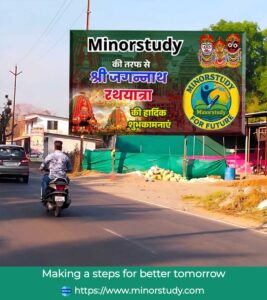8 Joyful Revelations About Shri Jagannath Rathyatra That Will Ignite Your Spirit!
Shri Jagannath Rathyatra: Heartiest greetings on the joyous occasion of Shri Jagannath Rathyatra from Minorstudy 🎉—a festival that pulsates with devotion, unity, and timeless tradition. This article unfolds the vibrant history, compelling facts, soulful FAQ, detailed timeline, deep significance, heartfelt wishing, and the everyday impact of this spiritual event. Written in a warm, human-centric tone, it invites you to experience the Rathyatra not just as a ritual but as a living celebration of culture and community.
- 8 Joyful Revelations About Shri Jagannath Rathyatra That Will Ignite Your Spirit!
- 🕉️ 1. History of Shri Jagannath Rathyatra – A Tradition Carved in Time
- 📜 2. Fascinating Facts About Shri Jagannath Rathyatra
- ❓ 3. FAQs About Shri Jagannath Rathyatra
- 🗓️ 4. Timeline of Shri Jagannath Rathyatra Events
- 🌟 5. Significance of Shri Jagannath Rathyatra – Beyond Rituals
- 1. Spiritual Democratization
- 2. Celebration of Tradition & Ecology
- 3. Healing Collective Energies
- 4. Cultural Confluence
- 5. Socio-Economic Boost
- 💐 6. Heartfelt Wishing on Rathyatra
- 🔧 7. Everyday Life: How Rathyatra Impacts Us
- 🔑 8. Key Observance Points & Takeaways
- 🧭 Conclusion: The Universal Message of Shri Jagannath Rathyatra
🕉️ 1. History of Shri Jagannath Rathyatra – A Tradition Carved in Time
The origins of Shri Jagannath Rathyatra can be traced to the ancient city of Puri, Odisha, centered around the majestic Jagannath Temple, established in the 12th century by King Anantavarman Chodaganga Deva. The term Jagannath means “Lord of the Universe,” and the deity—along with his siblings Balabhadra and Subhadra—is revered with deep devotion.
Each year, on the Ashadha Shukla Dwitiya (2nd day of the bright fortnight of the Hindu month of Ashadha, typically falling in June or July), the Festival of Chariots takes place on the legendary Gundicha Road, drawing millions of pilgrims and spectators. Over the centuries, this solemn celebration has transcended geographical and social boundaries, binding people of varied faiths and backgrounds into a shared spiritual journey.
📜 2. Fascinating Facts About Shri Jagannath Rathyatra
| Aspect | Details |
|---|---|
| Deities on Chariots | Lord Jagannath (Neelachakra), Balabhadra, and Subhadra are placed on three grand chariots—Nandighosa, Taladhwaja, and Darpadala. |
| Rathas’ Builders | Chariots are reconstructed each year with traditional techniques—no nails, just woodwork joined with cotton ropes and natural materials. |
| Volunteer Carriage | The “Rath Yatra” famously includes all, regardless of caste or creed, in the sacred act of pulling the chariots. |
| Gundicha Temple | The journey culminates at Gundicha Temple, believed to be the home of Lord Jagannath’s aunt, Krishna Devi. |
| Return Journey | The deities return ten days later in the “Bahuda Yatra”, of equal fervor, including festive dances + feasts. |
| Global Celebrations | Rathyatra is now observed globally—in New York, London, Sydney, and beyond by ISKCON and local communities. |
| Astronomical Timing | The Rath Yatra date is aligned with specific celestial positions, blending religion and astronomy. |
| Spiritual Message | Symbolizes the inclusivity of God, leaving the temple for the masses—affirming that divine energy belongs to everyone. |
❓ 3. FAQs About Shri Jagannath Rathyatra
Q1: What makes the chariots special?
Each chariot is built afresh every year. The wood is sourced from the surrounding sacred forests, and artisans follow ancestral designs without modern fasteners—built purely with faith and craftsmanship.
Q2: Who can pull the Rath?
Anyone can—old, young, rich, poor—religion, caste, or creed no barrier. This act symbolizes equality and devotion in action.
Q3: How many people attend?
Puri sees millions of devotees, while global Rathyatras attract up to hundreds of thousands—a testament to its universal appeal.
Q4: Why Gundicha Temple?
It’s called the “Garden House of Jagannath.” Lord Jagannath, Balabhadra, and Subhadra stay there for a week, awakening spiritual and social renewal.
Q5: How is the festival funded?
A combination of temple endowments, royal grants, donations, and community support—underscoring the principle of shared responsibility.
🗓️ 4. Timeline of Shri Jagannath Rathyatra Events
| Day | Event & Significance |
|---|---|
| D-1 | Snana Yatra: Deities ceremonially bathe; public is restricted due to the deities’ symbolic illness (– 10 days stay at Gundicha Temple). |
| D-Day | Rath Yatra (Ashadha Shukla Dwitiya): Tri-chariots emerge amid drums, conches, and chants; the procession begins. |
| D+7 | Snana Purnima: Deities bathe again before returning; temple cleaning precedes resumption of darshan. |
| D+10 | Bahuda Yatra: Deities return to the main temple amid greater festivities, folk songs, and communal feasting. |
| D+11 | Rasa Lila: Celebrates Lord Krishna’s divine dance; temple performs special rituals, marking the cultural richness post-procession. |

🌟 5. Significance of Shri Jagannath Rathyatra – Beyond Rituals
1. Spiritual Democratization
Temples often restrict entry—here, the Lord emerges into public spaces, making divinity accessible to all.
2. Celebration of Tradition & Ecology
Chariots use eco-friendly wood and materials, showcasing sustainable craft traditions.
3. Healing Collective Energies
The moment of pulling the rope fosters unity, humility, and collective spiritual upliftment.
4. Cultural Confluence
Through devotional music, regional cuisine, and theatrical re-enactments, the festival becomes a canvas for sharing cultural heritage.
5. Socio-Economic Boost
Millions visiting Puri mean livelihoods for artisans, vendors, locals—embedding the festival deep within community prosperity.
💐 6. Heartfelt Wishing on Rathyatra
“Heartiest greetings on Shri Jagannath Rathyatra from Minorstudy!
May the divine blessings of Lord Jagannath, Balabhadra, and Subhadra fill your life with joy, peace, and unity. As you pull the sacred chariots in spirit or presence, may you be guided toward compassion, resilience, and boundless hope.” 🙏
Let this festival’s spirit—togetherness, humility, celebration—ignite optimism in every chapter of your life.
🔧 7. Everyday Life: How Rathyatra Impacts Us
Spiritual Reflection: Encourages us to come out of isolation and connect with community.
Values of Sharing: Reinforces how giving—time, faith, compassion—creates bonds stronger than transactions.
Sustainable Craftsmanship: Annual chariot construction is a lesson in eco-conscious living.
Tourism & Craft Revival: Healers, cooks, travelers—lives supported through traditional livelihoods.
Global Unity: Worldwide Rathyatra events demonstrate how ancient tradition fosters global brotherhood.
🔑 8. Key Observance Points & Takeaways
The Rath Yatra is a union of tradition and transcendence.
It breaks barriers of caste and creed by making the divine accessible.
The event fuels local economies and art forms, helping preserve age-old skills.
It teaches leadership through service—devotees and volunteers working tirelessly behind the scenes.
The eco-friendly construction of the carts offers a model of replayable sustainability.
🧭 Conclusion: The Universal Message of Shri Jagannath Rathyatra
In an era where communal divisions sometimes make news, the Shri Jagannath Rathyatra reminds us why coming together in celebration matters. As the chariots roll forward, they pull our collective hope, faith, and human unity.
The divine siblings stepping out of their temple and welcoming the world curb illusions of separation. Whether you’re pulling a rope or chanting in your own space, remember this festival is not just ritual—it’s a philosophy. It tells us: divinity truly lies when we walk together, laugh together, and tug along the chariot of shared destiny.
May the Lord’s Rathyatra inspire you to be bold yet humble, modern yet rooted, and to find divinity in real connections with fellow humans.
“Let your spirit roll forward as the Rath—open-hearted, humble, and fused in unity.”








